Solomon Islands Guadalcanal

Discover the Island
The island of Guadalcanal, nestled in the heart of the Solomon Islands, is home to some of the finest cocoa from this region. Honiara is the Capital of the Solomon Islands and main port for all exports, including cocoa, coconut, and tuna. The cocoa trees grow in this rich volcanic soil, protected from the midday sun beneath high coconut palms.

Meet the Farmer
Our Guadalcanal cocoa farmers are based along the North coast of the island, not too far from the historical Henderson airport. As education is mandatory on all the islands we buy from, after school, all the children are seen playing around the fermentation boxes and cocoa boxes. Our main farmer has four sisters and a wife that help maintain the farm. Each playing a part in the cocoa production – from finance to fermenting - which means it’s a family discussion when our Chocolate Makers goes out there to meet them and check the crops.

The fermenting of our cocoa beans takes place just 50 metres from the main houses and with the smell of acetic acid (vinegar) aroma that occurs during fermenting of cocoa being present during harvest season. Due to the showery squalls that dash in from the South Seas, our farmers are invested in solar drying enclosures in the form of raised drying beds that can be quickly covered with canvas after the 50-metre dash! This form of drying and not fire-drying - allows the true flavours inherent in the cocoa bean to come through without smokiness being a flavour note.
Solomon Islands, Makira Island

Discover the Island
Makira is the most Easterly of the main island group in the Solomon Islands and is abundant in tropical fruits. The island has one 10 km road going from the main village, past our farmer Lucy’s farm, to the other outlying village. There is a grass landing strip, which is perhaps the best route to Makira due to saltwater crocodiles taking up residency along the coastline.

Meet the Farmer
Not only does Lucy, our farmer own the land herself, but she also exclusively hires women to help produce the cocoa, too.

Due to the money she raises with selling super-quality cocoa directly to us, her two daughters have been able to go to university in Australia, aspiring to come back to the farm to take over the family business due to them seeing how sustainable and rewarding cocoa production can be.
Papua New Guinea, Karkar Island

Discover the Island
Our cocoa comes from Karkar island, which sits off the Northeast coast of Papua New Guinea. As you arrive to Karkar Island by boat, the vista is a visually accurate representation of what you’d expect to see of a 40-mile-across volcano rising up from the sea! It’s mammoth! There is no plane service so the only way on and off the island is on the cocoa boat, which takes 6 hours and includes the weekly school commute and any hospital trips required… The boat is powered by coconut, to show how every part of one of the island’s main crop is used to aplomb. The island itself is inhabited by hundreds of different species of orchids which is a stunning sight, as are the millions of fruit bats which dine on the plethora of fruit produced - but not cocoa, thankfully. There are no monkeys on the island and instead, the tree kangaroo took over as resident of the rainforest trees of Papua New Guinea.

Meet the Farmers
Our farmers are the Goodyear and Middleton families, based on the gentle, fertile slopes of the volcano. They are both some of the main employers on the island, with farm hands having been there for generations and whole families choosing to work there due to the fair conditions.

Vanuatu Malekula Island

Discover the Island
The cocoa-farming village is in the centre of Malekula island, which you get to by an 8-hour boat journey from Port Vila or flying into a grass strip. The pilot flies over once a day, and if he sees no-one waiting, he will fly on to the next island, so you better not be late for your flight.

The main dirt track in the village connects the one store, a church and a well, via a tractor and is as secluded and serene as you can get. The amount of cocoa grown on the island of Malekula doesn’t even register on the cocoa scale of production, which shows how rare it is.
The island is pure paradise, with the only predator being coconut crabs, but as the name suggests and much to our relief, they don’t go after the cocoa pods. In the 1920s cocoa entered the island and through many changes of management and funding and Malekula is now back up and running as a thriving cocoa producing island. And for this, we must champion and support the fine cocoa that grows on the island.
Philippines Mindanao Island

Discover the Island
Mindanao is the southernmost main island in the Philippines group, just inside the “Goldilocks zone” 10 degrees either side of the equator. It is Firetree’s only cocoa origin North of the Equator. The cocoa we buy directly from our farmer grows on the slopes between Mount Apo and Davao city in the fertile tropical rainforest-like conditions.

Meet the Farmer
As commercial cocoa is relatively recent in the Philippines, it is still made up of multi-crop small holders where they grow cocoa alongside a whole host of crops, mainly for the local market – think pineapple, coconut, and yams. There are more cooperatives in the Philipps as each farmer doesn’t produce enough beans to build a fermentary.
Madagascar Sambirano Valley
Discover the Island

The Valley based in the Northwest of Madagascar and is a warm wet microclimate, which is why the cocoa grows so well. Whereas to the Southwest of the island, there is a huge, hot desert, complete with ancient Baobab trees. Both inhabit a diverse plethora of fauna which strive best in the climate they are accustomed to.


Meet the Farmer
The farmers are in the Sambirano Valley on the Southeast side of the river, heading towards the mountains. The farms we use are spread out and tricky to get to and they are usually a family affair with a few employees. Our cocoa farms have a French legacy as the farmers still use the ancient French bullock carts to transport the just-harvested cocoa pods to the farm fermentary. The shade for our cocoa is provided by enormous 30-metre fast-growing hardwood trees – which are used for shelter and fuel for the region.










